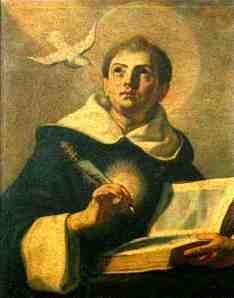St. Wenceslaus, Aragorn, and Christ: the Army of the Dead
Last September 28 is the Feast of the St. Wenceslaus (907-935 A.D.), the Good King Wenceslaus, patron Saint of Bohemia and parts of the Czech Republic. St. Wenceslaus is the subject of many legends (Wikipedia):
There are many legends about King Wenceslaus. An old one claims a huge army of knights sleep inside Blaník, a mountain in the Czech Republic. The knights will wake and under the command of St. Wenceslaus will help the Motherland when it is in ultimate danger (see also King in the mountain legends).
There is a similar great legend in Prague which says that when the Motherland is in danger or in its darkest times and close to ruin, the equestrian statue of King Wenceslaus in Wenceslaus Square will come to life, raise the army sleeping in Blaník, and upon crossing the Charles Bridge his horse will stumble and trip over a stone, revealing the legendary sword of Bruncvík. With this sword, King Wenceslaus will slay all the enemies of the Czechs, bringing peace and prosperity to the land.
These legends are similar to the summoning of Aragorn of the Army of the Dead, as prophesied by Malbeth the Seer, in the days of Averdui, last king at Fornost (Return of the King, pp. 43-44):
Over the land there lies a long shadow,
westward reaching wings of darkness.
The Tower trembles; to the tombs of kings
doom approaches. The Dead awaken;
for the hour is come for the oathbreakers:
at the Stone of Erech they shall stand again
and hear there a horn in the hills ringing.
Whose shall the horn be? Who shall call them
from the grey twilight, the forgotten people?
The heir of him to whom the oath they swore.
From the North shall he come, need shall drive him;
he shall pass the Door to the Paths of the Dead.
Christ, the King of the Living and of the Dead, also went to the Paths of the Dead and preached the Good News to those who died, awaiting the messiah. As stated in the Catechism of the Catholic Church:
632 The frequent New Testament affirmations that Jesus was “raised from the dead” presuppose that the crucified one sojourned in the realm of the dead prior to his resurrection.478 This was the first meaning given in the apostolic preaching to Christ’s descent into hell: that Jesus, like all men, experienced death and in his soul joined the others in the realm of the dead. But he descended there as Savior, proclaiming the Good News to the spirits imprisoned there.
633 Scripture calls the abode of the dead, to which the dead Christ went down, “hell” – Sheol in Hebrew or Hades in Greek – because those who are there are deprived of the vision of God.480 Such is the case for all the dead, whether evil or righteous, while they await the Redeemer: which does not mean that their lot is identical, as Jesus shows through the parable of the poor man Lazarus who was received into “Abraham’s bosom”:481 “It is precisely these holy souls, who awaited their Savior in Abraham’s bosom, whom Christ the Lord delivered when he descended into hell.”482 Jesus did not descend into hell to deliver the damned, nor to destroy the hell of damnation, but to free the just who had gone before him.483
634 “The gospel was preached even to the dead.”484 The descent into hell brings the Gospel message of salvation to complete fulfilment. This is the last phase of Jesus’ messianic mission, a phase which is condensed in time but vast in its real significance: the spread of Christ’s redemptive work to all men of all times and all places, for all who are saved have been made sharers in the redemption.
635 Christ went down into the depths of death so that “the dead will hear the voice of the Son of God, and those who hear will live.”485 Jesus, “the Author of life”, by dying destroyed “him who has the power of death, that is, the devil, and [delivered] all those who through fear of death were subject to lifelong bondage.” Henceforth the risen Christ holds “the keys of Death and Hades”, so that “at the name of Jesus every knee should bow, in heaven and on earth and under the earth.”


Leave a comment